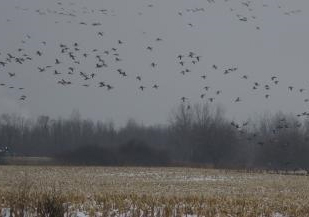The Renewable Fuels Association (RFA) has analyzed a new report out from the National Wildlife Federation on “Corn Ethanol and Wildlife” and found it lacking in accuracy.
 The University of Michigan study released last week claims to show “how government incentives for corn ethanol are driving farmers to shift land into corn production, resulting in significant decreases in grassland bird populations throughout the fragile Prairie Pothole Region.” The region studied includes Iowa, Minnesota, North and South Dakota.
The University of Michigan study released last week claims to show “how government incentives for corn ethanol are driving farmers to shift land into corn production, resulting in significant decreases in grassland bird populations throughout the fragile Prairie Pothole Region.” The region studied includes Iowa, Minnesota, North and South Dakota.
The RFA analysis concludes that “selective and questionable use of data, unclear research methods, and emotional arguments cast doubt on the reliability of the conclusions and recommendations.”
The authors deliberately pick and choose certain data from certain years to support their conclusions. In many cases, the authors selected agricultural data points that are obvious outliers when viewed in the context of both mid- and long-term historical trends. As one example, the paper uses 2004 and 2007 data for comparisons of planted corn acres, but uses 2007 and 2009 data for a comparison of acreage enrolled in the Conservation Reserve Program (CRP).
RFA also notes that USDA data clearly show that recent expansion of corn acres nationally and in the four-state region examined in the NWF report came through crop switching, not through the conversion of native grassland, since total crop acres in the four states actually declined slightly from 2004 to 2007. On top of that, the NWF report uses “grossly outdated assumptions about growth in average corn yield per acre and the amount of ethanol yielded per bushel of corn” to suggest the biofuel requirements of the expanded Renewable Fuels Standard will demand an additional 10.69 million acres of corn by 2015 over 2009 levels.

